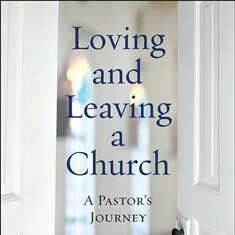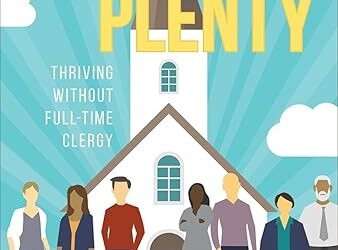Let’s face it – for many pastors the perception they have of their ministry when they set off to their first pastorate and the reality of that ministry are two very different things. Barbara Melosh’s Loving and Leaving a Church: A Pastor’s Journey tells the story of an older, second career, female pastor and her experiences with the small blue-collar congregation in Baltimore where she “learned how to be a pastor.”
The neighborhood is undergoing gentrification and the church has been in decline for forty years but Melosh optimistically thinks that she can change the congregation and save the church. That doesn’t happen and yet it would be wrong to call her time there a failure. She is faithful to the congregation who drives her to laughter and to tears and they, in turn, learn to love and accept her.
Melosh uses pseudonyms in the book and refers to her church as “Saints and Sinners” and her congregation as “the Saints.” But these Saints are not the ones we refer to as holy and virtuous in anthologies; they are ordinary people who constantly surprise their pastor and are full of contradictions.
Anyone who has ever tried to bring renewal to a church can appreciate Melosh’s frustrations. Although the sign on the church declares “A Warm Welcome Awaits You Here,” the Saints are an insular group. As Melosh notes: “What they wanted was to come to church—this church—on Sunday, to take their familiar places in the pews, to worship the way they’d done for years, with the people they’d known for years.”
As Melosh plans a peaceful Advent with “midweek services and encouraging people to observe Advent at home,” she is ambushed by Winter Wonderland – a church fair with lavish decorations including more than twenty artificial trees; secondhand goods, handmade crafts, and hot dogs for sale; and a throne for Santa which just happens to have been taken from its usual place next to the altar. To her credit, Melosh buries her disappointment as her Advent dreams recede and has a rush of affection for the Saints who had worked for more than three days to create what they considered a thing of beauty.
There are serious moments in the book too as Melosh describes with honesty her empathy for those she ministers to: Saints now in nursing homes, a young mother facing cancer, and the family of the victim of a violent crime whose funeral Melosh presides over. When she finally realizes it is time to move on, she struggles with guilt at the thought of leaving the Saints to soldier on and disappointment at her failure to save the church. She is heartbroken and writes:
I had been called to ministry, and I’d given my heart to it. But I’d been distracted by the wrong dream, deluded into thinking I could save the Saints. They already had a Savior, and it wasn’t me. I was called to be faithful: to do the work in front of me, to serve the people I’d been called to serve, to love the people I’d been given to love…I was beginning to realize the precious gift that was already mine. Saints and Sinners might well not survive as a congregation. But in the candlelight of the healing services, I saw that the kingdom of God was already among us, and in us.





0 Comments